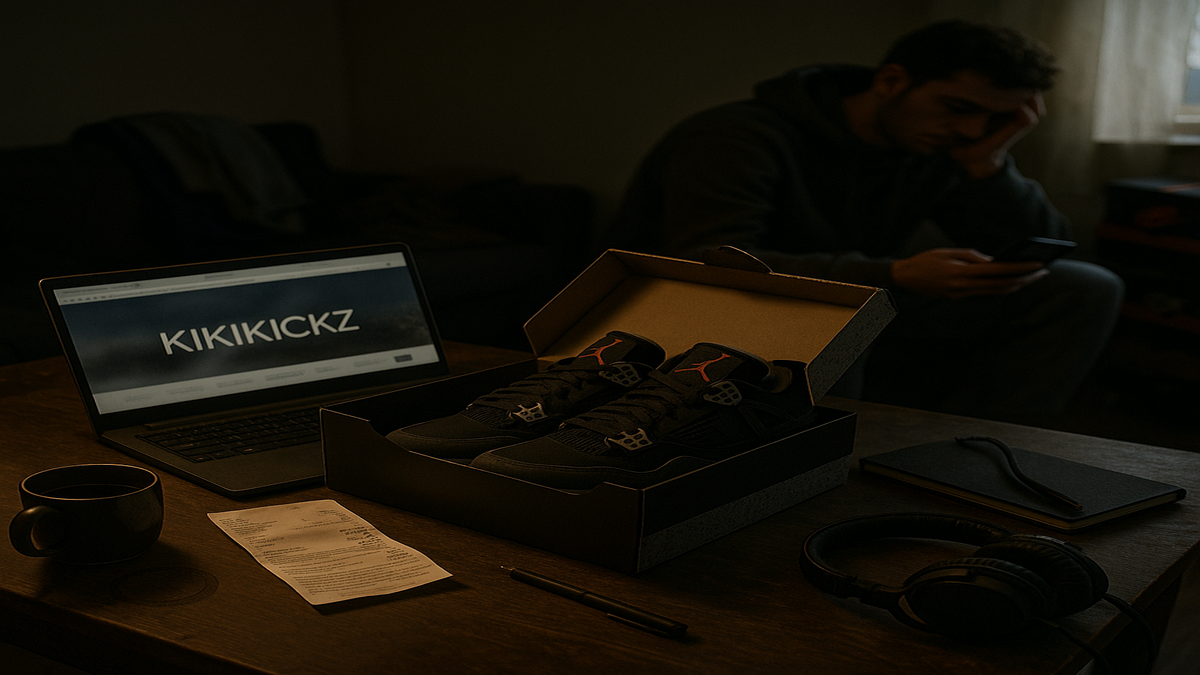At one point, Kikikickz was the darling of Europe’s booming sneaker resale ecosystem. Sleek branding, influencer clout, and rare pairs shipped in exclusive packaging. But as of late 2023, it filed for bankruptcy. Less than six months later, its assets were picked up in a quiet acquisition by a competitor. So, what went wrong?
From hype to insolvency
Launched in 2019, Kikikickz scaled quickly. It seized the Gen Z moment — sneaker culture, Instagram reels, and limited drops — and turned scarcity into profitability. Or so it seemed.
Behind the stylistic finesse, cracks began to form. According to public financial records, Kikikickz reported a net loss of €5 million in 2022. This followed a modest profit of just €39,400 the year prior. Alongside these losses, the company carried a financial debt of €1.57 million.
The sneaker resale market had shifted, fast. Demand deflated after the COVID-19 pandemic ebbed. Mass production by brands like Nike and Adidas reduced product scarcity. Values on once-coveted releases plummeted.
Marketing at all costs
Instead of adjusting, Kikikickz doubled down. Their solution was scale — high-budget collaborations with creators like Mastu and Léna Situations. But these deals carried costs the business couldn’t sustain. Margins hovered between 10–20% per pair. With acquisition costs mounting, every campaign tipped the balance sheet further into red.
“I used to make €200–300 a month reselling through Kikikickz,” says Adrien L., a sneakerhead based in Lyon. “When they started pushing influencers instead of taking care of resellers, we knew something had changed.”
That shift was visible. What began as a reseller-friendly platform turned into a brand-driven marketing engine. And it couldn’t keep up with its own narrative.
Failed rescue, failed strategy
The Restocks collapse
In an attempt to salvage Kikikickz, Dutch competitor Restocks entered acquisition talks in mid-2023. The announced €8 million acquisition hinted at a second life. But in a dramatic twist, Restocks itself entered liquidation before the deal was finalized.
| Timeline | Event |
|---|---|
| 2022 | Kikikickz reports €5M net loss |
| Late 2023 | Declared bankrupt; Restocks begins acquisition |
| Nov 2023 | Restocks also files for bankruptcy |
| April 2024 | Wethenew acquires Kikikickz’s digital assets |
Only the shell remains
In April 2024, French resale giant Wethenew finalized the acquisition of Kikikickz’s site, social media, and customer database. Crucially, it did not assume its debts, according to FashionNetwork.
For thousands of affected clients and resellers, this created a dead-end. The company prioritized tax and institutional debts, per LimitedResell. Small sellers and unpaid invoices became collateral damage.
Market conditions: not just Kikikickz
Kikikickz wasn’t alone. Market conditions grew colder. The resale segment contracted sharply in 2023, with analysts estimating a 30% drop in value globally. Platforms like Sneakersnstuff and SoldOUT also downsized or shut down, reflecting a broader correction in speculative hype.
- Adidas halting the Yeezy line eliminated a major supply stream for sellers
- Nike ramped up general releases, cutting into exclusivity
- Fees on traditional resale platforms (e.g., 10%+ on StockX) squeezed resellers’ profits
Newer entrants like Meta[Z], which lower fees through tokenization models — see Meta[Z] blog — are attempting to reinvent the resale process. But viability remains unproven at scale.
A changing power structure
For Wethenew, the acquisition brings market consolidation. The company, with over €100M in revenue in 2022, has yet to reach profitability. Yet it now holds marketing leverage, tech assets, and user data to weather a reshaped market.
Still, trust is fragile. A generation of resellers burnt by bankruptcy may not return if platforms don’t prioritize fair policies and transparent operations. The hype game no longer protects profits — it exposes risks.
FAQ
What were the main financial mistakes that led to Kikikickz’s downfall?
High marketing spend without matching revenue, thin profit margins (10–20%), and rising operational debts created a structurally weak business model. Despite strong branding, these internal flaws led to insolvency.
How did Kikikickz’s marketing strategies contribute to its financial issues?
Partnerships with high-profile influencers drove visibility but drained budgets. The returns on these campaigns didn’t compensate for narrow margins and declining market prices. Overhead grew faster than actual profits.
What role did the acquisition by Restocks play in Kikikickz’s bankruptcy?
The acquisition was supposed to inject capital and structure. But Restocks filed for bankruptcy before completing it, effectively removing Kikikickz’s last chance at revival. The fallout left operations in limbo for months.
How did the bankruptcy of Kikikickz impact its customers and suppliers?
Clients were left without refunds or support, and small-scale resellers lost pending payouts. Because debts were repaid in order of legal priority, many individuals were left with zero compensation.
What are the future plans for Wethenew after acquiring Kikikickz’s assets?
Wethenew has not released a detailed roadmap but is leveraging Kikikickz’s existing digital infrastructure and user base. Their goal appears to be reinforcing their market leadership in France while adapting to leaner business operations.



